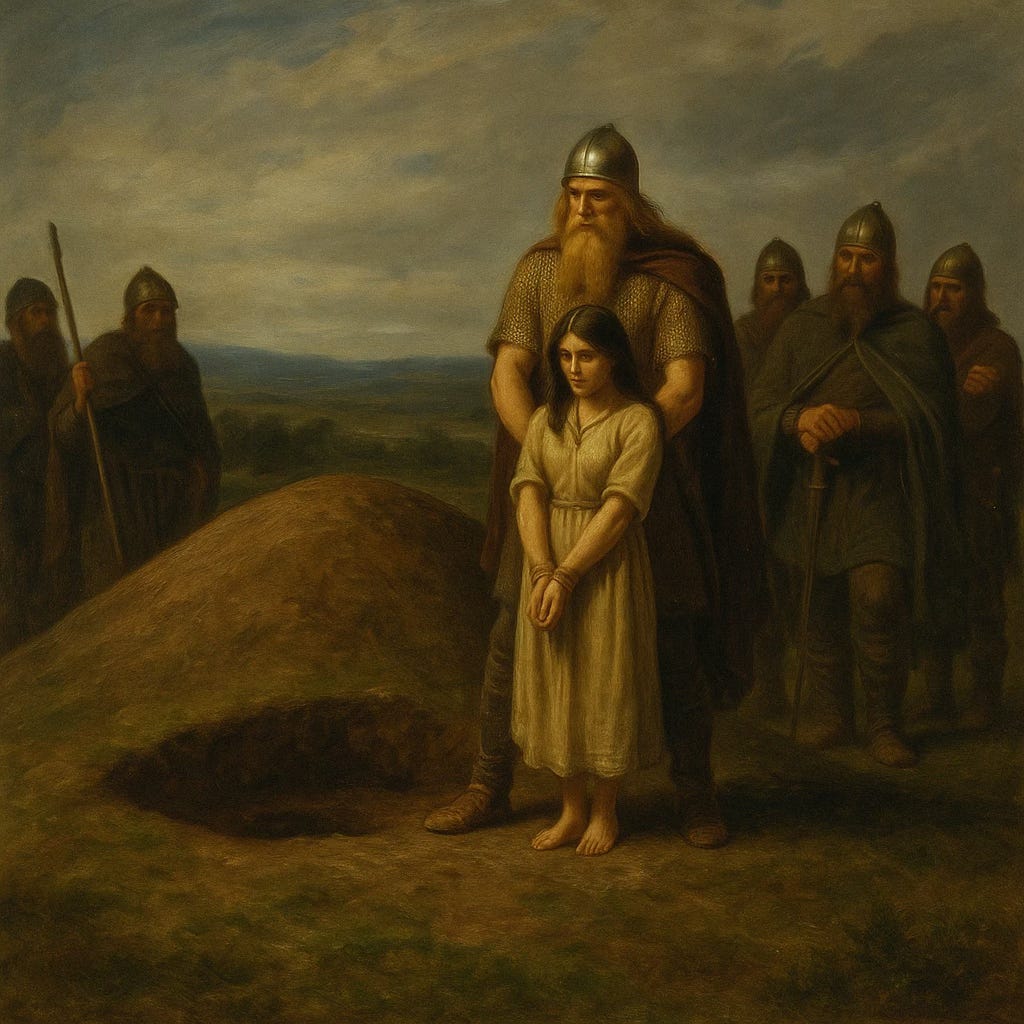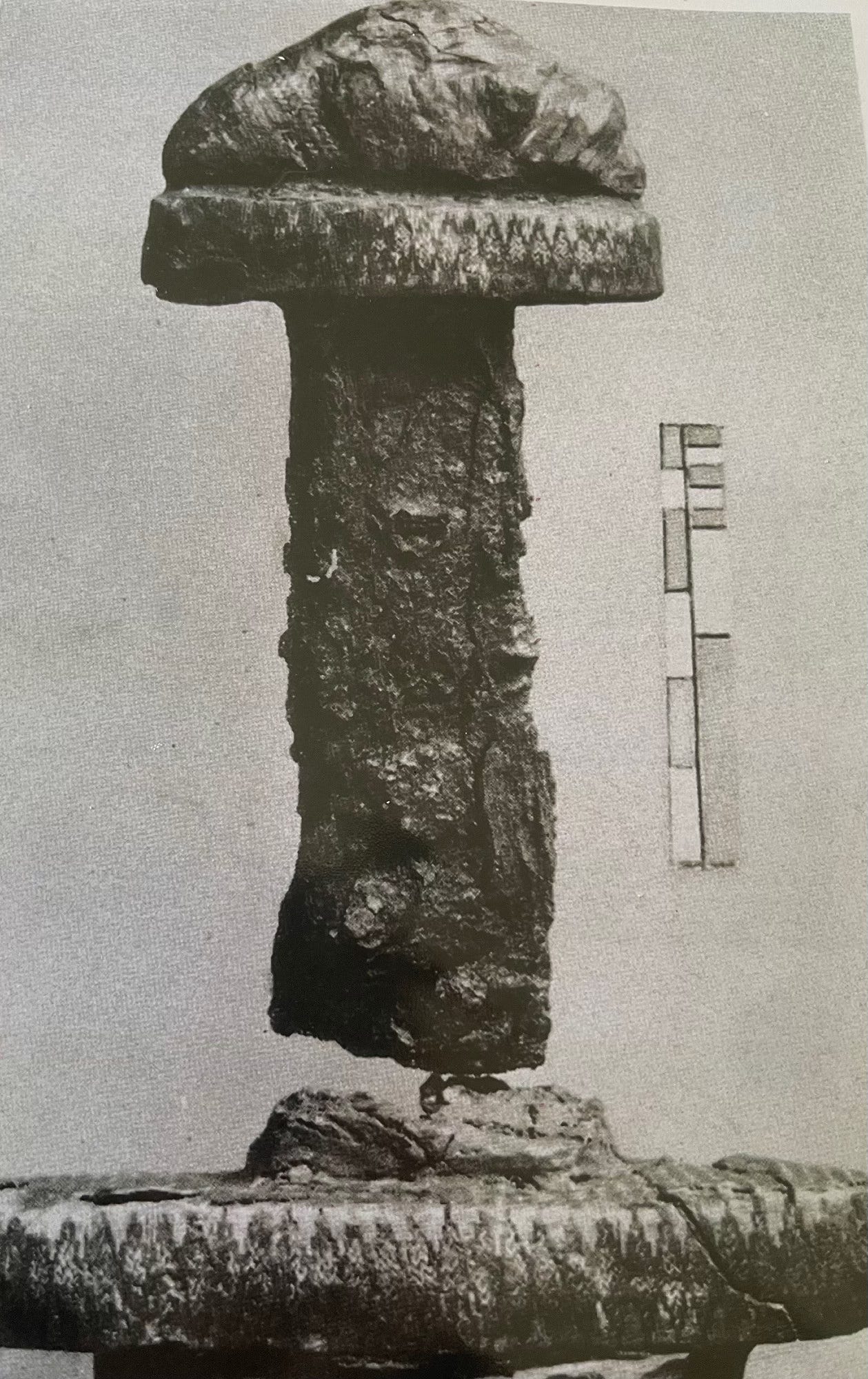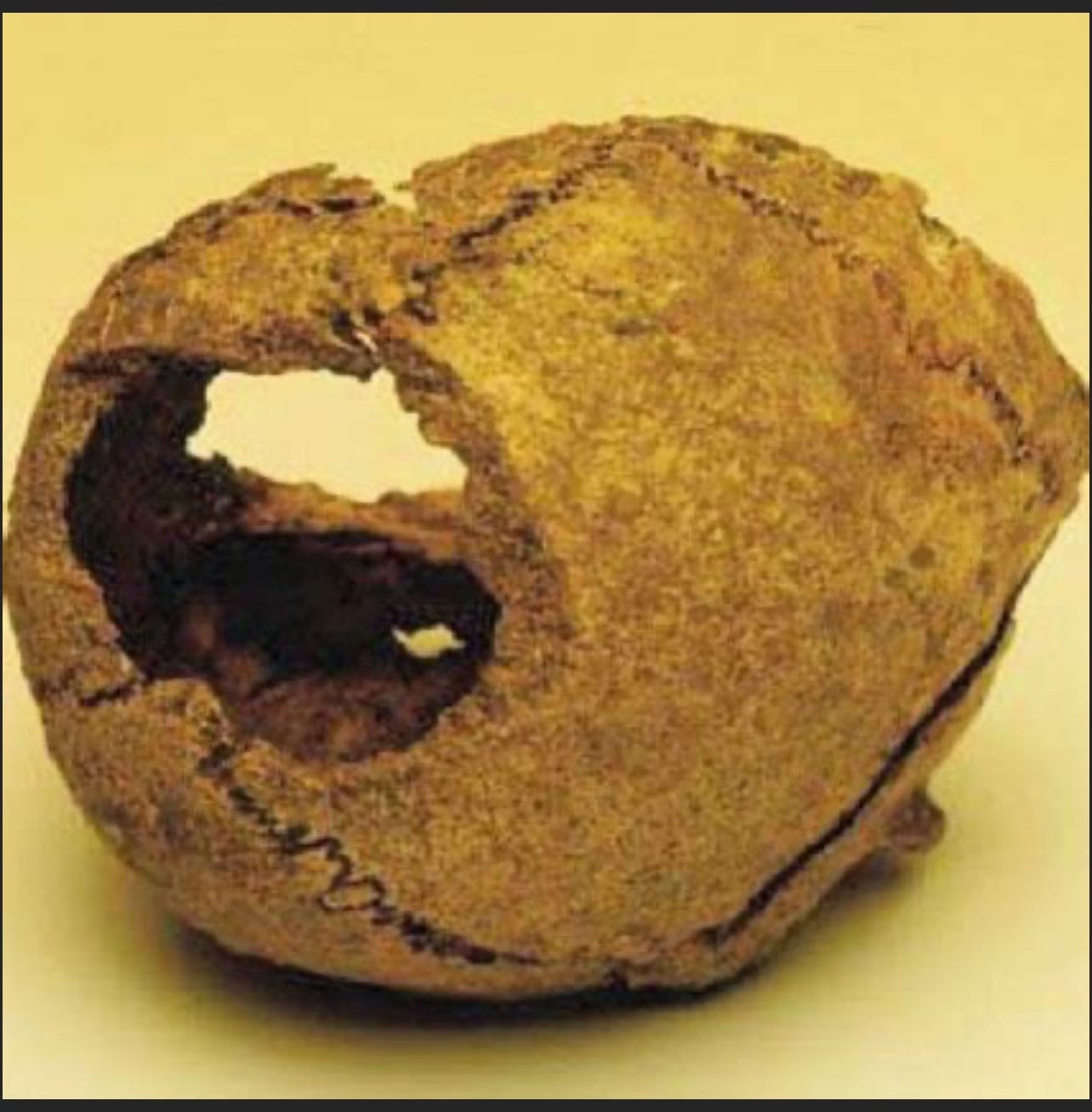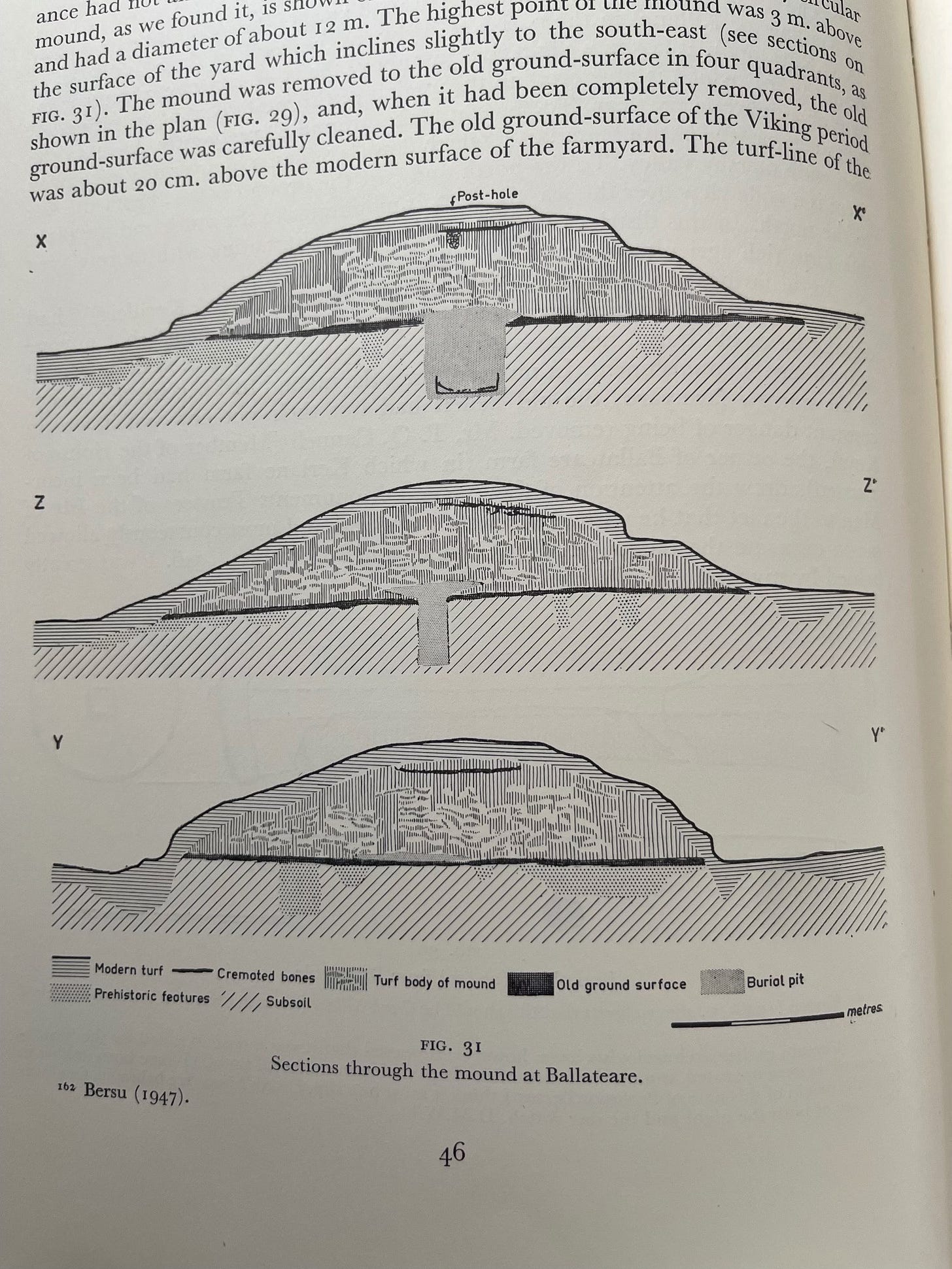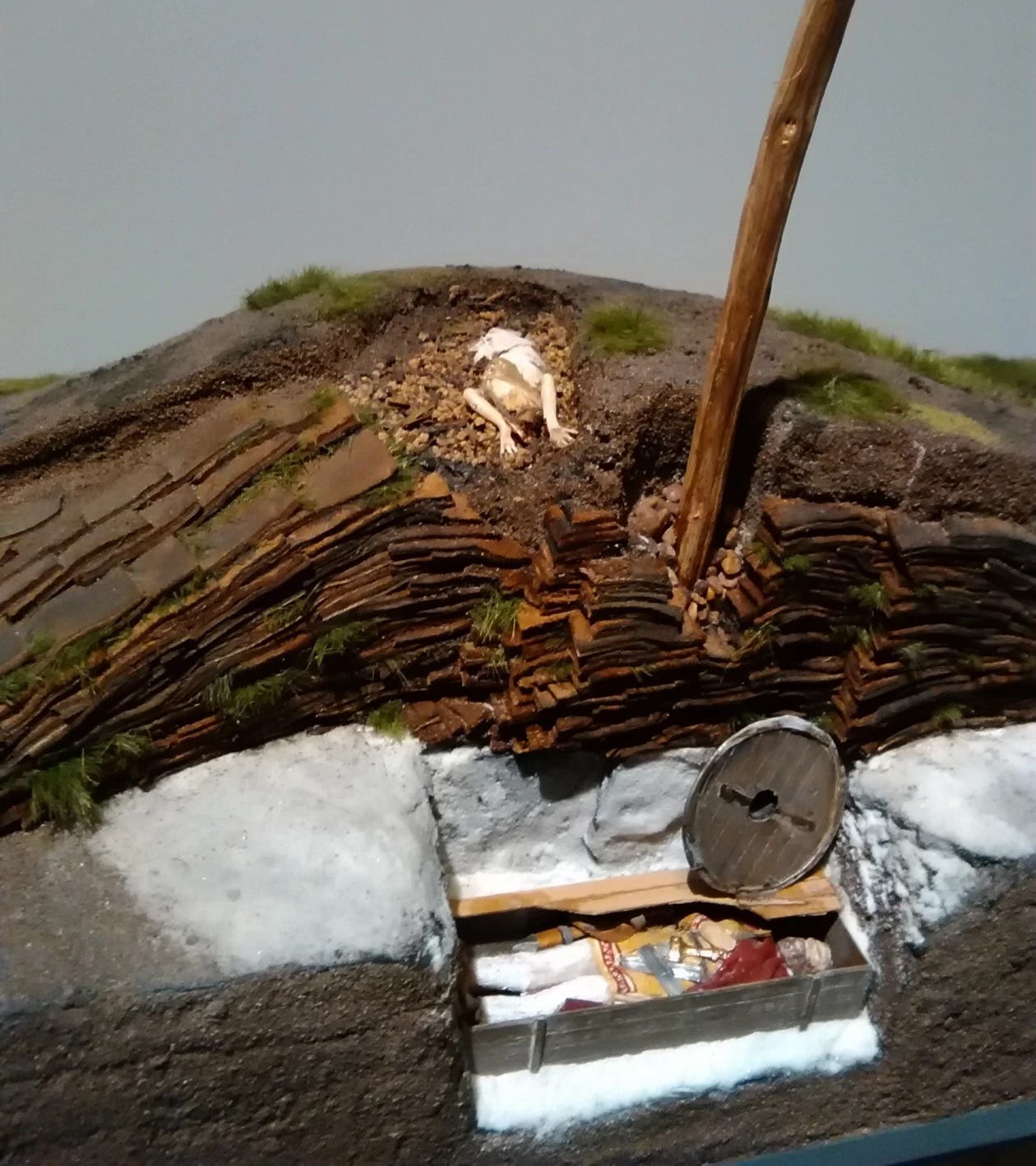The Ballateare Burial: A Viking Mystery Unearthed
With thanks to Dr. Clare Downham for spotlighting this chilling discovery
On the Isle of Man, archaeologists uncovered one of the most disturbing Viking burials in the British Isles. At Ballateare, a team led by Gerhard Bersu excavated a mound that held the remains of a richly armed male warrior. He lay with his sword, grave goods, and the honors expected of a Norse chieftain.
But someone else shared his grave.
Above him, buried without offerings, lay the body of a woman. Someone struck her skull with such force that it crushed the bone while her brain tissue remained intact, proving the fatal blow landed while she still lived, or moments after. Yet her cause of death tells only part of the story. Her body position created the real mystery.
She lay on her back, her legs extended, but her arms reached straight upward at ninety degrees. Her posture defied gravity. It defied explanation. Dr. Clare Downham recently revisited the case, sharing her observations on Bluesky. She asked the questions that keep scholars awake: Why did her body remain in this position? What happened in those final moments?
Some believe her arms froze in rigor mortis. That process can begin within two hours of death and last for more than a day. If someone tied her upright—perhaps to a central post—rigor mortis may have locked her arms in place. If they buried her soon after cutting her down, her body may have kept that posture.
Others suggest a darker possibility. If her killers left her body exposed, gases from decomposition might have forced her arms into that unnatural position. Dr. Downham noted another grim detail: the layer of cremated animal bone that covered her may have failed to conceal her fully. Her hands might have reached through the ash, grasping toward the final layers of turf that sealed the mound.
This image chills the blood.
The excavators found no sign of a second burial event. No tools or treasures marked her resting place. While the warrior received honor and wealth in death, she received nothing. Many interpret this woman as a ritual sacrifice. Perhaps someone killed her to accompany the man in the afterlife. Perhaps her death served another purpose—punishment, revenge, or a display of control.
Dr. Downham raised yet another idea. The wound to her skull may have resulted from a botched execution. The strike landed on the top of her head, not at the base where executioners aim to kill quickly. Did she resist? Did someone fumble the blow? Or did the killer strike after death as part of a ritual?
The Ballateare mound offers no answers. It gives us fragments of a story frozen in time: violence, ritual, and mystery.
Now I ask you: What happened on that hill? Why did her arms reach upward from the earth?
Share your theory in the comments. I want to hear your take!





